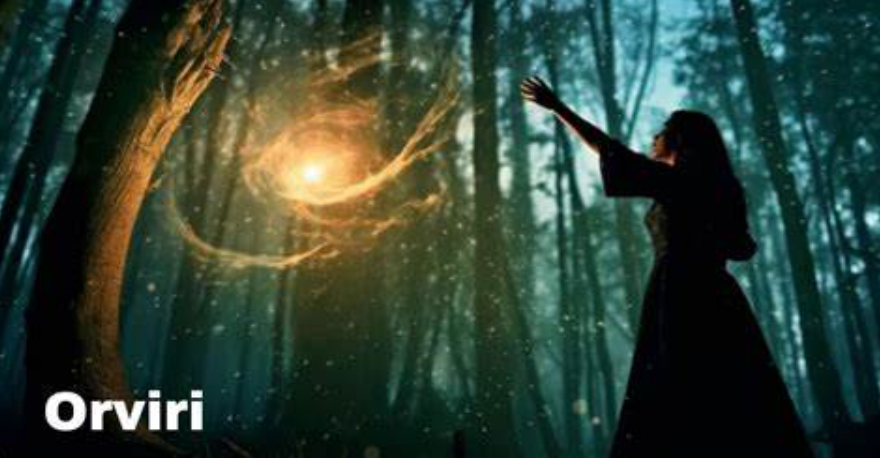Introduction to Örviri
Örviri, a term steeped in history and tradition, holds a significant place in various cultures around the world. From its origins in ancient rituals to its modern-day applications in art, fashion, and wellness, Örviri continues to captivate minds and hearts globally. In this article, we delve into the rich tapestry of Örviri, exploring its cultural significance, health benefits, sustainability practices, and more.
History and Origins of Örviri
Örviri traces its roots back to ancient civilizations where it served as a symbol of spiritual connection and reverence. The precise origins vary across cultures, with some attributing it to indigenous rituals while others associate it with religious practices. Regardless of its origins, Örviri has endured through centuries, evolving with each passing era.
Cultural Significance of Örviri
Örviri in Art and Literature
Throughout history, Örviri has been a muse for artists and writers alike, inspiring creations that reflect its beauty and symbolism. From intricate paintings to poignant poems, Örviri’s presence in art and literature transcends time, offering glimpses into the cultural ethos of different societies.
Örviri in Traditional Practices
In many cultures, Örviri plays a central role in traditional ceremonies and celebrations. Whether it’s a wedding, a harvest festival, or a spiritual gathering, Örviri adorns the surroundings, symbolizing abundance, prosperity, and unity.
Modern Applications of Örviri
Örviri in Contemporary Art
In the realm of contemporary art, Örviri continues to influence artists, pushing the boundaries of creativity and expression. Mixed media installations, avant-garde sculptures, and immersive experiences often incorporate Örviri motifs, adding layers of meaning and depth to the artwork.
Örviri in Fashion and Design
The allure of Örviri extends to the world of fashion and design, where designers draw inspiration from its vibrant colors and intricate patterns. From haute couture runways to everyday wear, Örviri-inspired clothing and accessories evoke a sense of cultural heritage and timeless elegance.
Health and Wellness Benefits of Örviri
Beyond its aesthetic appeal, Örviri is also celebrated for its health and wellness benefits. The soothing aroma of Örviri is believed to promote relaxation and stress relief, making it a popular choice for aromatherapy and holistic healing practices.
Sustainability and Örviri
As the world embraces sustainable living practices, there’s a growing emphasis on preserving traditional crafts like Örviri. By supporting artisans and implementing eco-friendly production methods, Örviri enthusiasts are ensuring that this ancient art form continues to thrive for generations to come.
Örviri and Global Recognition
In recent years, Örviri has gained international recognition, thanks to cultural exchanges and collaborations that showcase its beauty and significance on a global stage. From museum exhibitions to international festivals, Örviri’s influence transcends borders, fostering appreciation and understanding across diverse communities.
Örviri Traditions Across Different Regions
While Örviri shares common themes and motifs, each region imbues it with unique cultural nuances and interpretations. From the bold colors of South America to the intricate designs of Asia, Örviri traditions vary widely, reflecting the diversity of human creativity and expression.
Örviri: Preserving Tradition in a Modern World
In an era of rapid globalization, preserving traditional practices like Örviri is more important than ever. By honoring its roots and embracing innovation, communities around the world are finding ways to adapt Örviri to contemporary lifestyles while staying true to its essence.
Örviri: Challenges and Opportunities
Despite its enduring popularity, Örviri faces challenges in the modern world, including cultural appropriation and mass production. However, these challenges also present opportunities for dialogue, collaboration, and innovation, ensuring that Örviri remains a vibrant and relevant art form in the 21st century and beyond.
Conclusion
In conclusion, Örviri stands as a testament to the power of art, culture, and tradition to transcend boundaries and unite humanity. From its ancient origins to its modern-day manifestations, Örviri continues to inspire and captivate people around the world, reminding us of the beauty and richness of our shared heritage.
Unique FAQs
- Is Örviri only found in specific cultures? Örviri has roots in various cultures worldwide, from indigenous communities to ancient civilizations. While its specific manifestations may vary, the essence of Örviri—its symbolism, motifs, and cultural significance—resonates across different societies.
- What are some popular applications of Örviri in daily life? Örviri finds its way into various aspects of daily life, including clothing, home décor, and wellness products. Many people also incorporate Örviri-inspired designs into their personal accessories and lifestyle choices.
- How can one differentiate between authentic Örviri and mass-produced imitations? Authentic Örviri pieces often bear the marks of handcraftsmanship, including subtle variations in color and texture. Additionally, they may come with certificates of authenticity or labels indicating their cultural provenance and ethical production practices.
- Are there specific rituals or ceremonies associated with Örviri? Yes, Örviri often plays a ceremonial role in weddings, births, and other significant life events. Additionally, some cultures perform rituals or blessings involving Örviri to invoke blessings, protection, or prosperity.
- How can individuals support the preservation of Örviri traditions? Supporting artisans, purchasing ethically sourced Örviri products, and advocating for cultural appreciation and respect are essential steps in preserving Örviri traditions. Additionally, promoting dialogue and education about Örviri’s cultural significance can help raise awareness and foster appreciation for this ancient art form.

